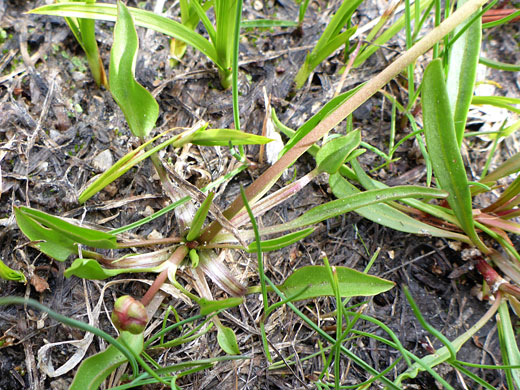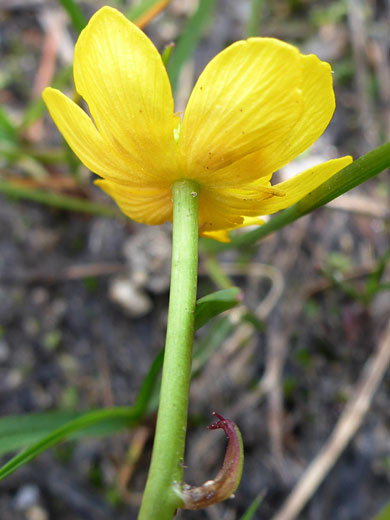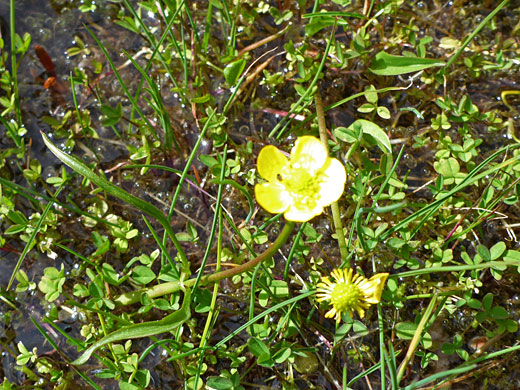Ranunculus Alismifolius, Plantain-leaf Buttercup
Plants > Wildflowers > Ranunculaceae > Ranunculus Alismifolius

Ranunculus alismifolius (plantain-leaf buttercup), Cottonwood Lakes Trail, Sierra Nevada, California
Common name:
Plantain-leaf buttercup
Family:
Scientific name:
Ranunculus alismifolius
Main flower color:
Range:
The Rocky Mountain states and all states to the west
Height:
Up to 27 inches
Habitat:
Streambanks, pond margins, bogs, damp woodland, wet meadows, from 5,000 to 12,000 feet
Leaves:
Unlobed, hairless, lanceolate, elliptic or ovate, stalked (basal) to stalkless (cauline), with entire or finely toothed margins. Up to 5.5 inches long
Season:
May to August
Ranunculus alismifolius occurs in most mountainous areas of the West, over a wide range of elevations, and can be abundant in suitable habitats. Plants are quite variable, in such aspects as height, growth form, number of petals, leaf margins, leaf shape and hairiness; there are six recognized varieties, mostly occupying distinct regions.
Plants are usually hairless. Basal leaves are relatively wide, ovate to elliptic, with acute bases, and attached by stalks of similar length to the blade, while stem leaves are short-stalked, or stalkless, and narrowly lanceolate in shape. Leaf tips vary from sharp-pointed to rounded.
The five sepals may be hairy or glabrous, reflexed or spreading, and they wither before the flowers open. The yellow petals number between five and 12. The yellow stamens form a ring, and are generally appressed close to the petals, while the shorter green carpels form a tight cluster at the center.
Plants are usually hairless. Basal leaves are relatively wide, ovate to elliptic, with acute bases, and attached by stalks of similar length to the blade, while stem leaves are short-stalked, or stalkless, and narrowly lanceolate in shape. Leaf tips vary from sharp-pointed to rounded.
The five sepals may be hairy or glabrous, reflexed or spreading, and they wither before the flowers open. The yellow petals number between five and 12. The yellow stamens form a ring, and are generally appressed close to the petals, while the shorter green carpels form a tight cluster at the center.
All Contents © Copyright The American Southwest | Comments and Questions | Contribute | Site Map



